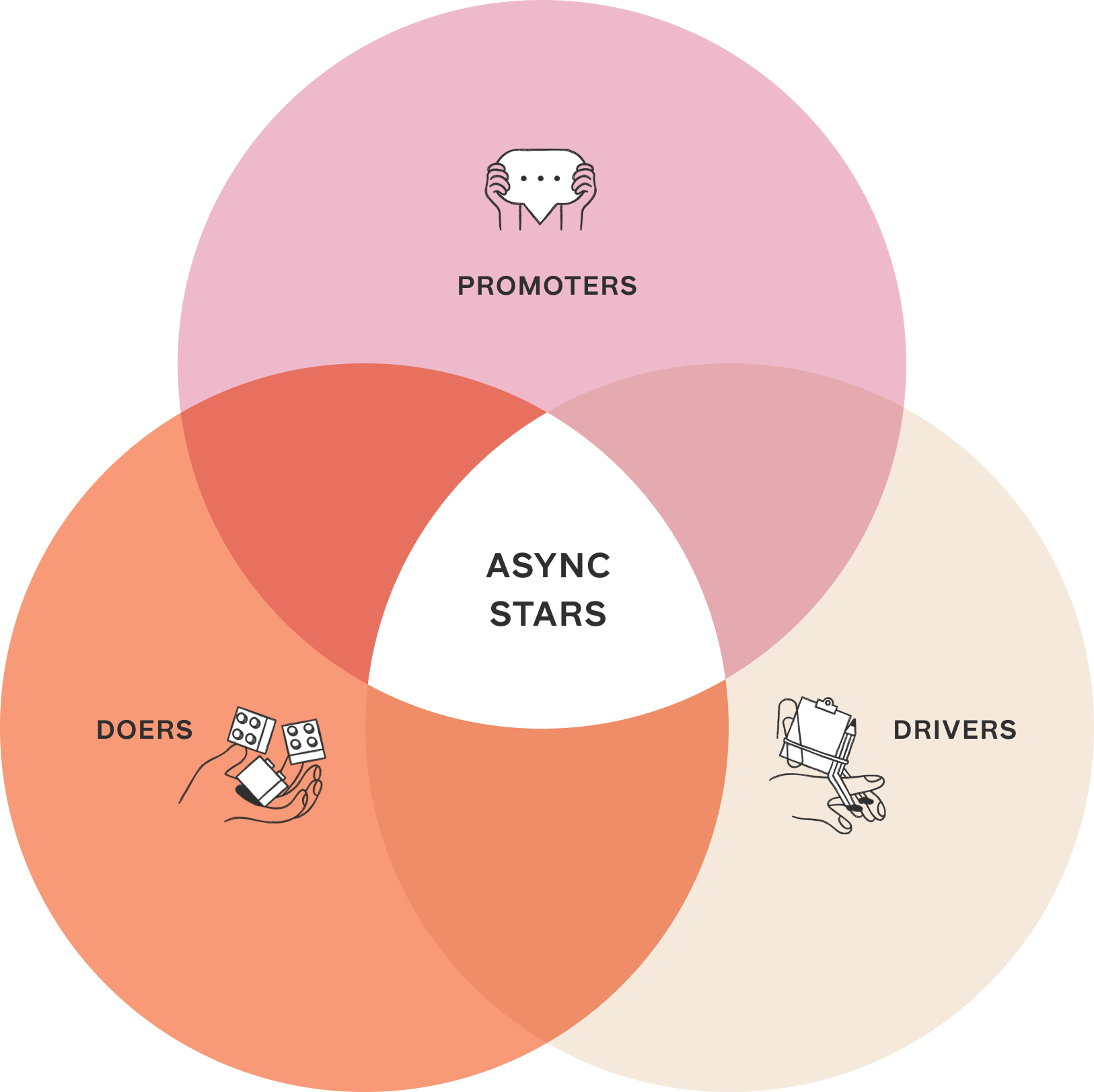Async is for more than engineers
How to cultivate qualities you need to thrive in async
Async is for more than engineers
How to cultivate qualities you need to thrive in async

There's a stereotype that async is best for developers. There's some truth to that.
A lot of devs grew up on the internet, playing video games and frequenting programming forums. They knew from an early age how to communicate and collaborate with people in different time zones, and how to use English as a lingua franca. They understand things about async culture intuitively, like the fact that sarcasm doesn't translate very well in chat.

Async can be slower than in-sync communication, and it can be really frustrating at times. While the profiles that fit your async culture depend on how you embrace it, you can also manage the risks and rewards of async for different types of team members.
The ability to thrive in async doesn't necessarily only apply to devs, especially now, when entire generations have come of age online. Instead there's a more general set of qualities you can ascribe someone who works successfully in async.
They are:
- doers: self-motivated or intrinsically driven to achieve and learn
- drivers: proactive and decisive; don't wait for orders
- promoters: passionate and excited to share what they create for their own benefit and the benefit of others

And while some people have all three right off the bat, you can also cultivate these qualities in your team. Here's how to build an async-first mindset into your organization:
Look for doers in hiring
Self-motivation can't really be taught, unfortunately. And the common solution to it, micromanagement, is unproductive for everyone. Look for candidates who have started their own side projects, who have gone above and beyond proscribed outcomes in previous roles, who have worked as freelancers, and whose references mention this quality specifically.
Design roles and outcomes to encourage drivers
From the beginning, the scope of a role should be a collaboration between employee and manager. This is a great way to put the employee in the driver's seat of their own career and path within the company. Designing their own roles allows people to explore, execute, and grow based on what most excites them.
When it comes to outcomes, driving inevitable comes with some risk-taking. The best way to make sure that drivers don't crash and burn is to adopt short work cycles, so that failures are addressed quickly and you can move on with learnings as soon as possible. At Slite, we make experimental, 1-week "builds" a part of our regular roadmap.
Lastly, avoid forced rules and empty metrics: no daily check-ins, standups, or superficial "KPIs" that make people look more productive than they really are. Instead, use nudges to enhance productivity while preserving autonomy in your async team (Interested in nudges? We wrote a post about them.)
Turn modest team players into shameless promoters
Self-promotion doesn't come naturally to a lot of people, especially those who love to work in a team, and that's a good thing. But without visibility and transparency practices, tons of work will go unrecognized in an async team. To help build up promotion in your team try:
- Rotating weekly updates - have teams or individuals take the mic each week, and share a video presentation of their latest efforts.
- A #shipped channel where people can celebrate/give kudos to recent launches & keep track of how many new products are created in a given work period
- Show and tell days - create opportunities for team members to share their expertise in niche areas, whether that's directly related to their role or not (ie. a cyber security presentation, a creative writing course, or group gnocchi making). This doubles as professional development and bonding.
- Positive feedback loops: refer to promotion efforts in performance reviews and in public discussions.
Ideally, async team members will start to develop all three qualities over time: they'll be doers, drivers, and promoters. But if some people excel in some areas more than others, then all is well, as long as everyone's making the effort to create a team that embodies these qualities.
We're convinced that async practices can be taught and refined over time, and we're already seeing unique async cultures pop up at companies around the world. When you lean into the strengths that already exist in your team, you're handing individuals the power to create the company that suits them best, and that's one of the greatest benefits of async work.
.png)



.png)


